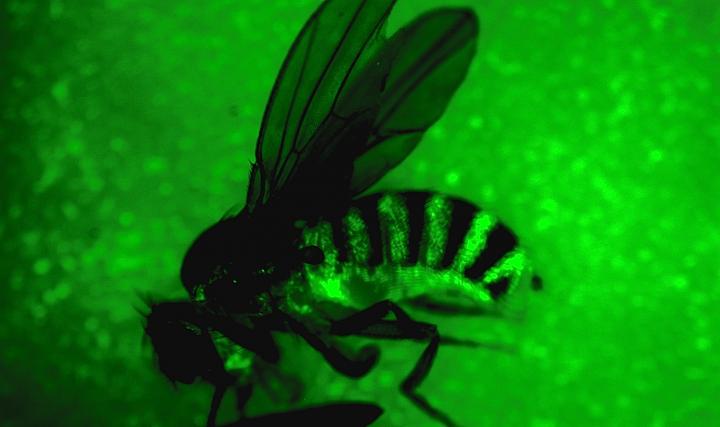|
|||||||||||||||
|

CLICK ON weeks 0 - 40 and follow along every 2 weeks of fetal development
|
||||||||||||||||||||||||||||
RNA pathway plays key role in our lifespan Humans and other animals carry rogue DNA sequences called Transposable Elements (TEs). To prevent passing TEs onto our children, piRNA pathways in reproductive organs block TEs from being active in sperm and eggs. With their new study of flies, Brown University biologists are the first to show the piRNA pathway blocks TE activity while operating in a normal non-reproductive body tissue — fly fat body — which also helps sustain the life of that animal. "It's required for normal health and longevity," said Dr. Stephen Helfand, professor of biology at Brown University and senior author of the study appearing in Nature Communications. Previous reports of piRNA found outside of reproductive organs, were in cancer or stem cells. One study suggested it might also be present in a subset of adult fly neurons. But, no one had ever measured its affects on normal health and aging. In experiments led by Brown graduate student Brian Jones, the research team tracked "piwi" and "flamenco" gene components of the piRNA pathway — into the fat tissues of flies. The fly "fat body" is akin to adipose and liver tissues in mammals and assists their immune system. Once researchers confirmed the piRNA pathway was active in normal, mature fly tissue, they conducted several experiments to knock out each component and see what would happen. They found with the piwi gene gone, flies had significantly fewer piRNAs.
Using other techniques, researchers found piwi-lacking flies had greater DNA damage compared to flies with a working piwi gene. In addition, flies lacking either piwi or flamenco had less fat than control flies. Flies without piwi succumbed to starvation more quickly, and flies with either of the genes knocked out lived considerably shorter lives than flies with a working copy of both genes. About four in five flies with a working piwi gene were still alive at 60 days of age. But, virtually all the piwi-lacking flies were dead long before. Among flies with a flamenco gene intact, about half were still alive at 60 days. However, those flies without any flamenco had died off.
The discovery that the piRNA pathway works in a fully developed, healthy, non-reproductive body tissue and protects health and lifespan is an important finding, Helfand added, but it's not clear yet how far the discovery can take the biology of aging. "We are just identifying that it is in this specific tissue, and we're leaving room for the possibility that it may be in other tissues in the body that are not gonadal and this may also be the case for other animals as well," Jones said. "It's possible that this pathway has roles in other somatic tissues." It's also not clear whether the piRNA pathway has similar effects on health in mammals and, in particular, humans.
Now with a $9.6 million federal grant awarded earlier this year, Helfand's close colleague John Sedivy, professor of biology, is leading a three-year, multi-institution effort to test that theory and determine if interventions are possible. Abstract In addition to Jones and Helfand, the new study's other authors are Jason Wood, Chengyi Chang, Austin Tam, Michael Franklin and Emily Siegel. The National Institutes of Health and a Glenn/American Federation of Aging Research Breakthroughs in Gerontology Award funded the study. |
Jan 6, 2017 Fetal Timeline Maternal Timeline News News Archive  Green fluorescence shows where transposable elements are moving about
|
||||||||||||||||||||||||||||

